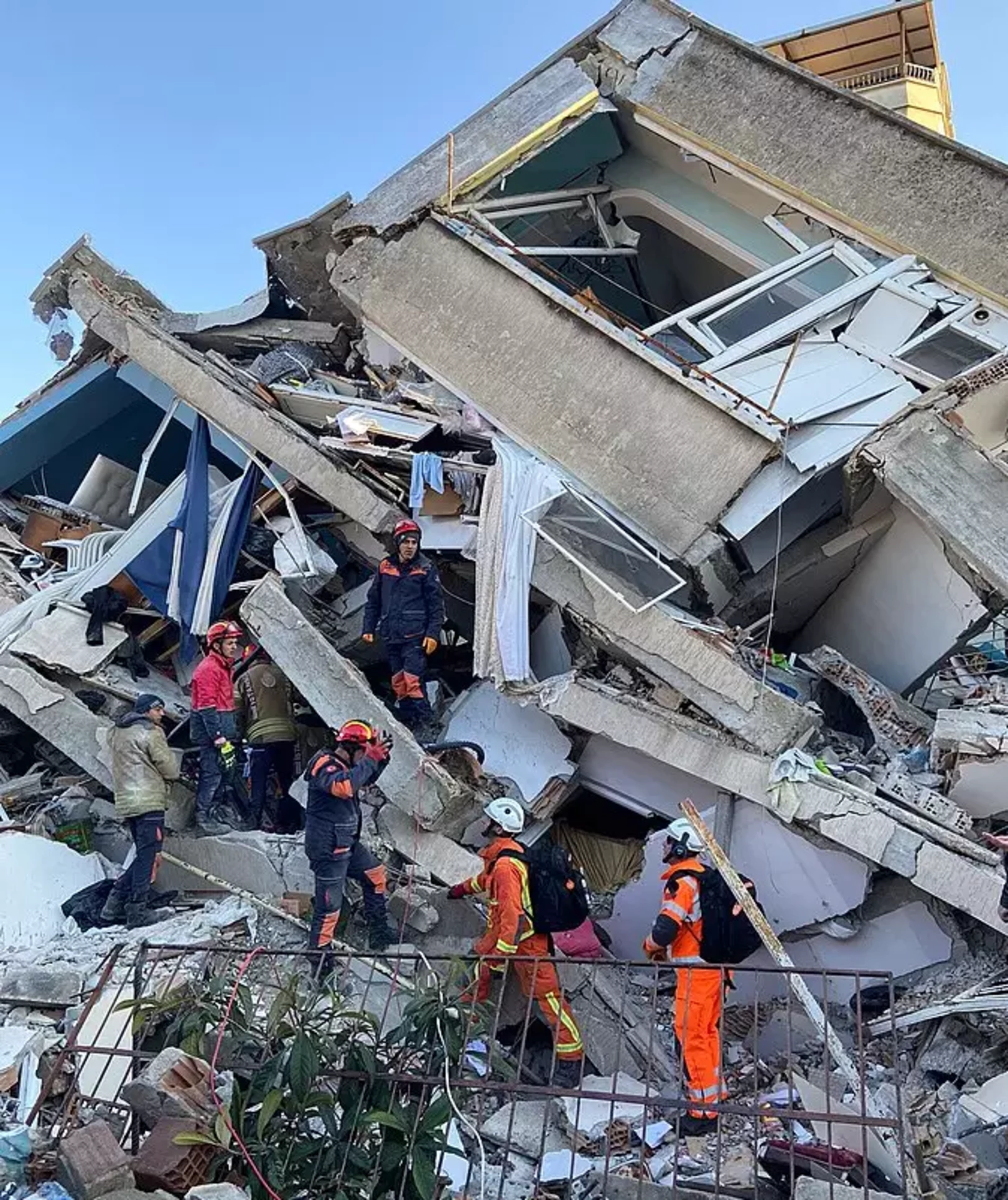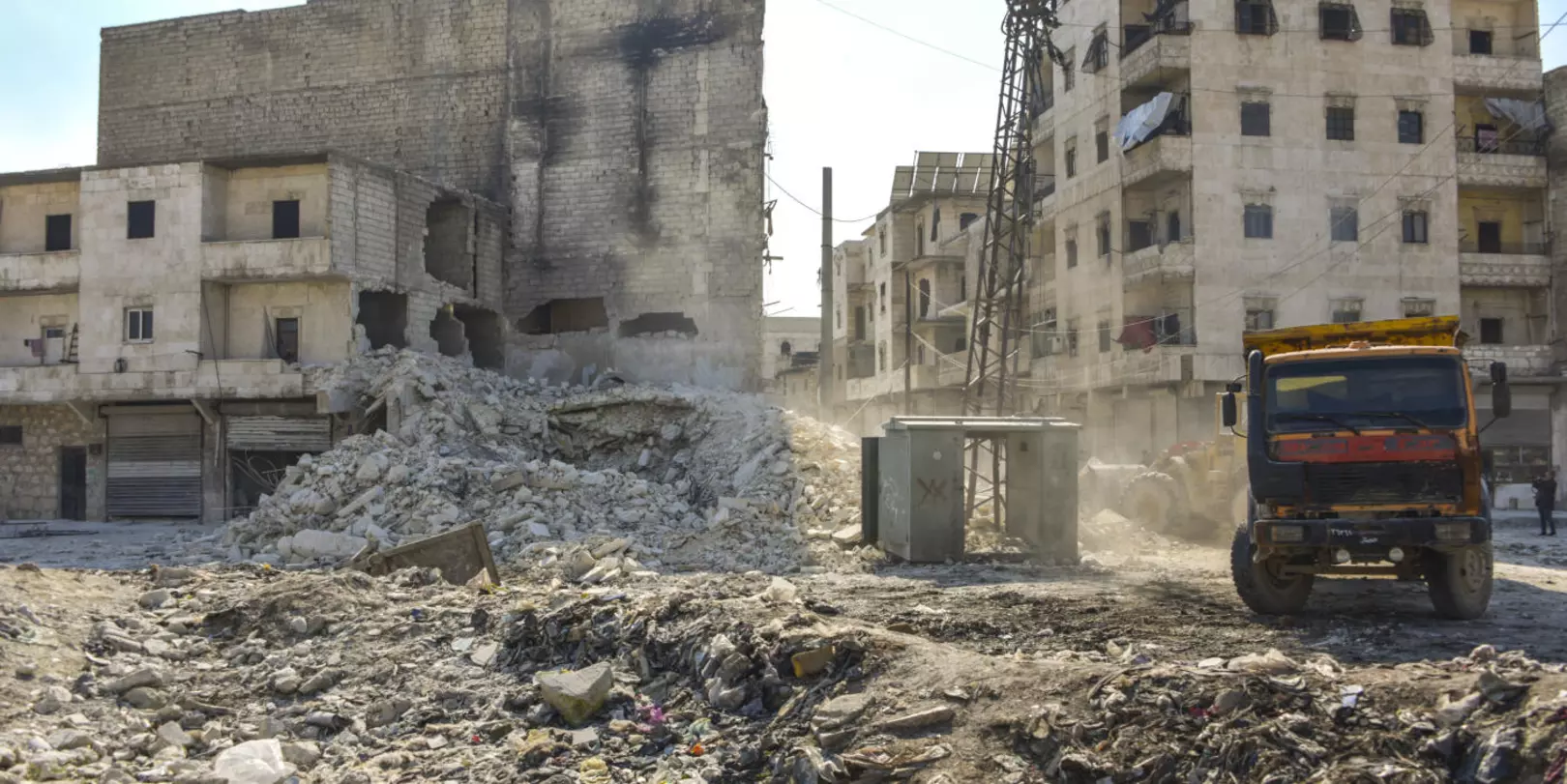Two major earthquakes struck southern Türkiye on 6 February 2023, causing devastating impacts across multiple provinces.
In Türkiye the earthquake affected 11 provinces in the southern and southeastern parts of the country, killing approximately 50,000 people and destroying around 298,000 buildings.
11
affected provinces
50,000
people killed
298,000
buildings destroyed
These earthquakes also greatly affected parts of northwest Syria, with around 4.1 million of the 4.5 million people already relying on humanitarian aid before the earthquake, intensifying the dire humanitarian crisis in the region.
We address current gaps in the analysis ecosystem and provide an independent analysis of the humanitarian implications of the earthquakes.
IN TÜRKIYE

Some people still lack access to adequate shelter and live in makeshift accommodations, while the total number of individuals residing in such shelters remains unknown. The demand for sufficient shelter, water, and hygiene kits in both informal and formal settlements intensify, with increased water usage for WASH needs and a greater need for shade and shelter.
Additionally, the lack of clean water and sanitation in informal settlements raises the risk of diseases like scabies, cholera, and waterborne illnesses, potentially leading to a health emergency if untreated.
The earthquakes have also disrupted provincial directorates and women's shelters, hindering their ability to provide support and address gender-based violence (GBV) complaints. The affected provinces already faced heightened protection concerns, further exacerbated by the earthquakes, particularly for women, children, and individuals with disabilities, with protection risks expected to rise as people continue living in temporary settlements.
CHALLENGES
Both countries continue to grapple with significant challenges in meeting the essential needs of their populations. These challenges encompass areas such as shelter, non-food items (NFI), protection, water and sanitation, healthcare and food security. The situation remains highly demanding as efforts to address these needs persist in both Türkiye and Syria.
In Syria

Northwest Syria faces similar challenges, where the needs of its most vulnerable groups are further exacerbated by the earthquake. Children, especially unaccompanied and separated minors, face increased risks, including child labor. The earthquakes also led to unintentional family separations, making family reunification challenging due to loss of civil documentation.
Gender-based violence (GBV) risks are heightened for women and girls due to protracted displacements, limited access to services, and overcrowded shelters. Women and girls with intersecting vulnerabilities, such as disability and marital status, face additional protection risks. The response to the specific needs of people with disabilities and older individuals has been inadequate.
Loss of civil documentation hampers access to services and property recovery. Mental health and psychosocial support needs are significant, as the population already experienced trauma from conflict. Coping strategies such as child labor, forced and early marriages, and substance abuse pose further protection threats.
CURRENT needs
Despite efforts in the humanitarian response, gaps remain. The highest priority humanitarian needs include emergency shelter and non-food items (NFIs), water, sanitation, and hygiene (WASH) support, and healthcare services. These are closely followed by the provision of food assistance, multi-purpose cash assistance, and social protection measures.
Analysis products
on
Syria-Türkiye earthquake
29 September 2023
Syria: Capacity-strengthening needs in NWS non-government-controlled areas
DOCUMENT / PDF / 290 KB
This report explores the capacity-strengthening needs of the local NGOs (LNGOs) headquartered and registered in Türkiye and the local responders operating in the nongovernment- controlled areas of Northwest Syria (NWS) – Idleb and northern Aleppo – following the February 2023 earthquake response and the July 2023 non-renewal of the UNSC cross-border resolution. The capacity-strengthening needs are categorised based on the three strategic pillars of the Humanitarian Leadership Academy (HLA).
04 August 2023
Northern Syria: key crises to watch
DOCUMENT / PDF / 1,016 KB
This report provides an overview of three key humanitarian crises in northern Syria that are expected to deteriorate or see a significant humanitarian impact in the next 6 to 12 months.
Attached resources
21 July 2023
Syria: Cross-border resolution expiration
DOCUMENT / PDF / 2 MB
This report aims to provide an overview of the humanitarian impact of the failure of the UN Security Council to renew the mandate for crossborder delivery of humanitarian aid into Northwest Syria (NWS) after its expiry on 10 July 2023 and the contextual dynamics around this.
Attached resources
16 June 2023
Syria: Assessing increased protection risks and vulnerabilities after the earthquakes
DOCUMENT / PDF / 288 KB
The report provides an overview of the main protection threats in NWS that the February earthquakes have worsened. It is not a comprehensive list of all protection threats in the region. The analysis includes the differentiated impact on the population and the most at-risk groups.






